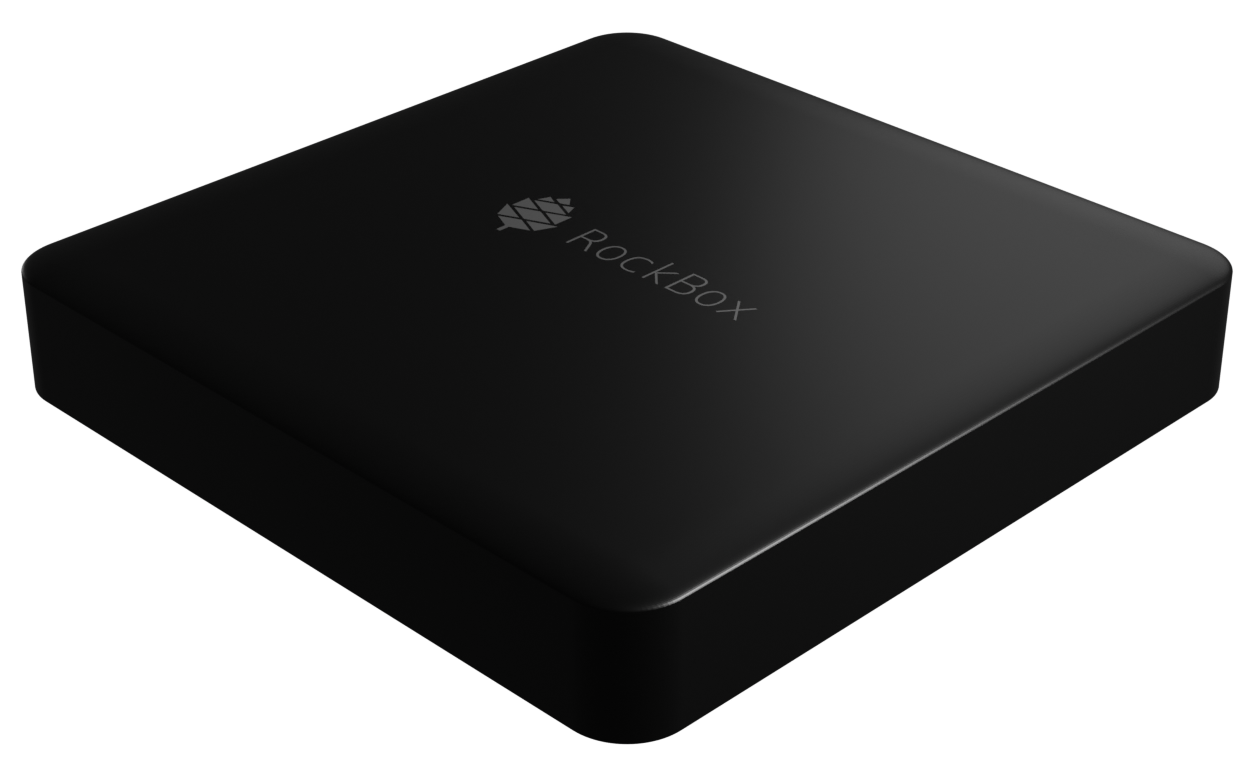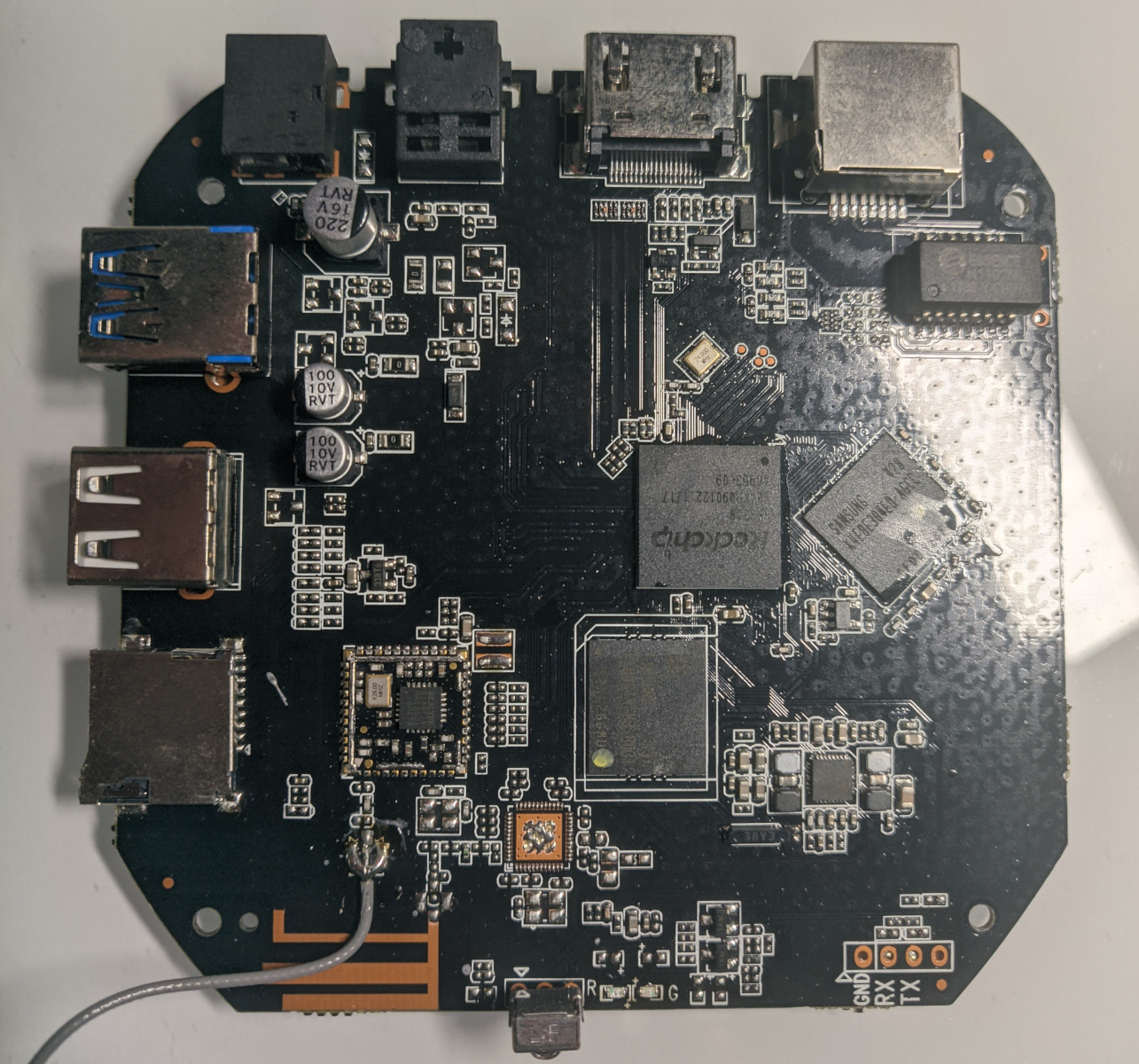Difference between revisions of "RockBox"
(→Software releases: +sec) |
|||
| Line 19: | Line 19: | ||
* [https://github.com/mrfixit2001/debian_builds/releases Mrfixit2001's Debian Minimal Release] (Note: can be updated to a more recent Debian using the regular updating tools, except for the kernel and u-boot) | * [https://github.com/mrfixit2001/debian_builds/releases Mrfixit2001's Debian Minimal Release] (Note: can be updated to a more recent Debian using the regular updating tools, except for the kernel and u-boot) | ||
== Hardware == | |||
=== LED === | |||
The blue LED can be controlled with via the sysfs (/sys/devices/platform/leds/leds/power/brightness): | |||
To turn off the blue LED: <code>echo 0 | sudo tee /sys/devices/platform/leds/leds/power/brightness</code> | |||
To turn on the blue LED: <code>echo 1 | sudo tee /sys/devices/platform/leds/leds/power/brightness</code> | |||
Note: the maximum brightness is set to 255, it doesn't support dimming however. Turning off the blue LED will turn on a weak red LED. | |||
== Development == | == Development == | ||
Revision as of 18:30, 12 September 2021
The Popcorn Hour RockBox Basic is a TV box from the Cloud Media company in partnership with PINE64 and the PINE64 community. It is running a Rockchip RK3328 SoC and is supporting multiple different operating systems. The device is similar to the Rock64 and runs some of its operating systems, it has a custom PCB and multiple hardware differences however.
Specifications
- Dimensions: TODO
- Weight: TODO
- CPU: Rockchip RK3328, Quad core Cortex-A53 @ up to 1.5GHz
- GPU: Mali-450MP2
- System Memory: 1GB LPDDR3
- Internal Storage: 8GB eMMC
- Connectivity: 802.11a/b/g/n, Ethernet 10/100
- USB: 1x USB 2.0 OTG port, 1x USB 3.0 port
- Video Output: HDMI Standard HDMI 2.0a@60hz
- Audio Output: Via HDMI, Optical S/PDIF port
- Power Supply: DC 5V/2A
Software releases
- Mrfixit2001's Debian Minimal Release (Note: can be updated to a more recent Debian using the regular updating tools, except for the kernel and u-boot)
Hardware
LED
The blue LED can be controlled with via the sysfs (/sys/devices/platform/leds/leds/power/brightness):
To turn off the blue LED: echo 0 | sudo tee /sys/devices/platform/leds/leds/power/brightness
To turn on the blue LED: echo 1 | sudo tee /sys/devices/platform/leds/leds/power/brightness
Note: the maximum brightness is set to 255, it doesn't support dimming however. Turning off the blue LED will turn on a weak red LED.
Development
Disassembly
The device can be easily disassembled by removing the four rubber feet and by unscrewing the four screws underneath them. The board is held in place by additional two black screws. Note: The board is connected to the main body with a cable.
UART
A serial console can be connected to the RockBox to retrieve the UART boot logs. A device such as a USB to TTL converter can be used to connect the RockBox. Simply set the USB device to 3.3 volts and connect GND to the GND connector on the mainboard, RTX to TX and TXD to RX. The fourth unlabelled contact on the mainboard should not be connected. Note: Unlike the ROCKPro64, connecting TXD does not prevent the device from booting up.
Connect the USB device to the PC and use a tool such as screen to display the serial output:
screen /dev/ttyUSB0 1500000
Then power up the RockBox and enjoy the serial output on the PC.
To enable UART output in the OS as well (otherwise the output would stop at "Starting kernel ..."), console=ttyS2,1500000n8 can be added to the append line in the /boot/extlinux.conf file when using EXTLINUX.
Mainline Linux
When using EXTLINUX, the Linux kernel can be easily replaced by swapping the /boot/Image file with a more recent kernel (such as mainline Linux from Arch ARM, see [here http://os.archlinuxarm.org/os/ArchLinuxARM-aarch64-latest.tar.gz]. Note that this file is not updated with system updates and features such as Ethernet and video won't work.

